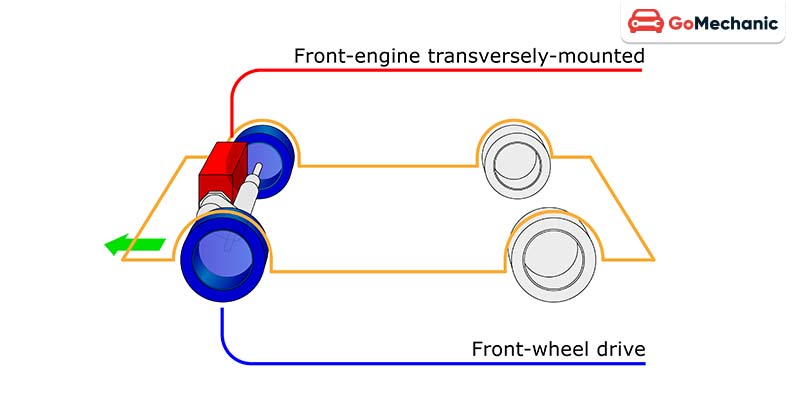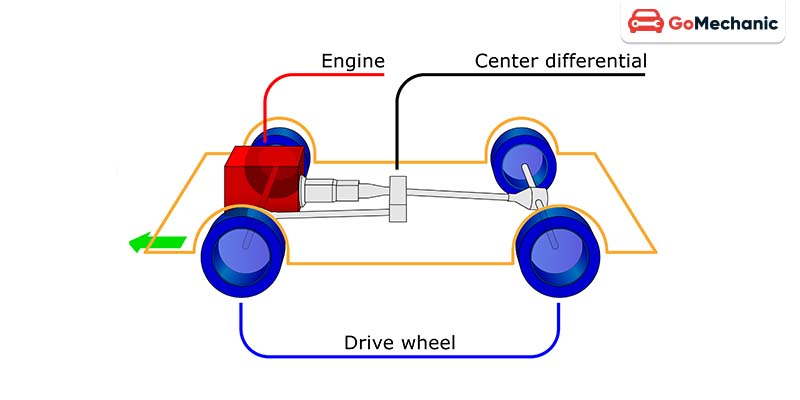Once inside the car, you can encounter FWD, RWD, 4WD and AWD. These are abbreviations that denote different styles of drives; the closing term usually refers to how power is transmitted by vehicles to their wheels. Knowing these phrases can help you decide which premium quality car suits your needs. Let’s follow everything in simple language.
Front Wheel Drive (FWD)

Front-wheel drive, or FWD, transfers engine power to the front wheels. This is the ultimate, not unusual powertrain of today’s vehicles. One of the reasons for its popularity is the efficiency of the fees. FWD cars are normally cheap to deliver and therefore cheap to buy as the right one. They’re also lighter and extra green because the engine and transmission are in the front, reducing overall weight.
Driving an automobile with FWD has numerous advantages. The weight of the engine over the front wheels provides better traction whilst riding uphill or on slippery roads. This makes them nice and applicable for ordinary use, particularly in places where it often rains or snows. However, FWD cars have a few risks. They do not deal with them so well at immoderate cornering speeds because all the weight and power is focused on the front.
Rear Wheel Drive (RWD)
Rear-wheel drive, or RWD, sends engine power to the rear wheels. This type of powertrain is often found in sports cars, vehicles, and high-performance cars. One of the benefits of RWD is better handling. Electricity is distributed again, so the front wheels are disengaged to handle steering. This offers a balanced driving experience.
RWD engines are known for their robust performance and are popular with enthusiasts. They provide better acceleration because the load will start up quickly at a certain stage and move backwards. This gives the rear wheels extra traction. However, RWD cars can struggle in bad weather conditions. They can lose traction more easily than FWD cars on wet or icy roads.
Four-wheel drive (four-wheel drive)

Four-wheel drive, or 4wd, sends electricity to all 4 wheels. This gadget is regularly used in vans and rancid cars. The 4-wheel drive is first class for driving on hard terrain and rancid roads. It can transfer between two and four wheel drive as needed. This allows the powertrain to deal with exclusive driving conditions.
When 4WD is engaged, all four wheels get power and give the vehicle better traction. This is beneficial for driving on sand, dust or snow. However, 4-wheel drive structures increase the weight and complexity of the car. They are also less gas guzzling compared to FWD or RWD cars.
All Wheel Drive (AWD)
All-Wheel Drive, or AWD, also sends power to all four wheels. Unlike 4WD, AWD is usually always on. It doesn’t want the momentum to get mixed up between modes. AWD systems are found in many vehicles, SUVs and crossovers. They are designed to offer greater traction and balance on all surfaces.
The AWD drive is excellent for general use and light off-road. It robotically adjusts the power distribution between the front and rear wheels based on driving situations. This improves handling and protection, especially in harsh climates. However, like 4-wheel drive, AWD designs transfer weight and can be less fuel efficient.
Choosing the right drive train
Choosing the right powertrain depends on your driving needs. Here’s a closer look at which powertrain is likely to be top-of-the-line for you:
FWD: Ideal for mild climates and city use. It is the most economical, gas green and handles correctly in maximum situations.
RWD: Great for people who are experienced riders and need better performance and handling. Be careful in terrible weather. If you’re a driving fanatic who values performance and handling, consider a RWD vehicle.
4-wheel drive: Perfect for off-road or rough terrain. It provides remarkable traction but is less fuel efficient. If you want a vehicle for off-road or rough terrain, a four-wheel drive system is the right choice.
AWD: Universal for all situations, providing greater traction and balance. Suitable for different climates and people who value protection and comfort. If you need a flexible car that performs well in all conditions, AWD is a great choice.
Conclusion
Understanding the variations among FWD, RWD, 4 wheel drive and AWD will allow you to make an informed decision when shopping for a vehicle. Each power has its strengths and weaknesses. Consider your using habits, environment and priorities to pick the proper one for you. Whether you prioritize fuel mileage, overall performance, off-road capability, or all-climate traction, there may be a powertrain to meet your desires. Once you understand the fundamentals of those powertrains, you may select a vehicle that suits your life-style and makes faultless use of the options.





